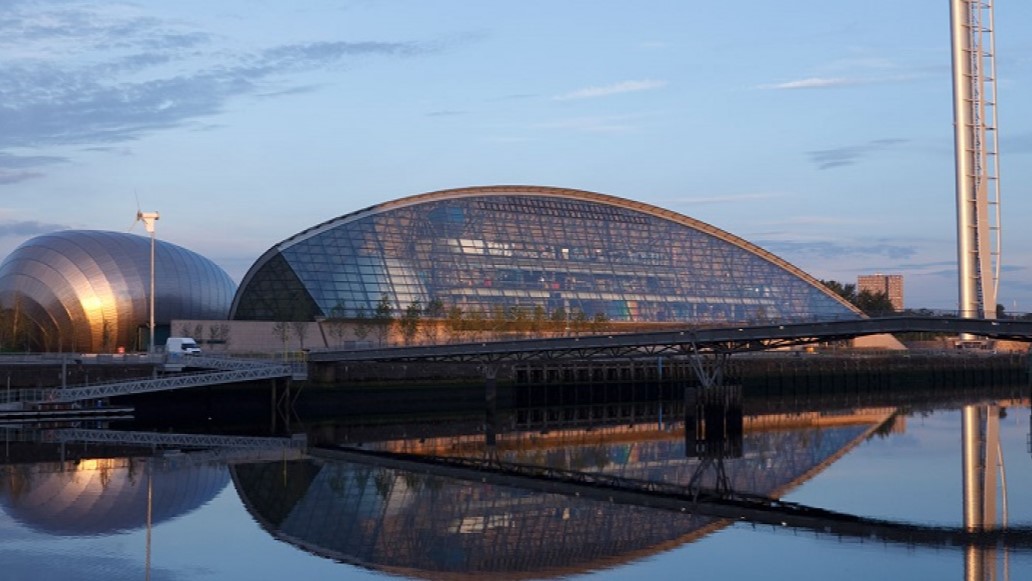Foundations for global net zero: An investor’s reflections on COP26

Impax Asset Management
This article has been written by Impax Asset Management, a specialist asset manager, investing in the opportunities arising from the transition to a more sustainable global economy. By Ian Simm, 22 November 2021
With the UN COP26 climate summit now behind us, it’s time to assess what has changed and, crucially, what should happen next.
There were certainly disappointments in the final conference text, particularly the deferral of commitments on strengthening nationally determined contributions (NDCs), the last-minute compromise on coal, and the failure to substantiate the US$100 billion of capital flows promised to developing countries.
Nevertheless, the emergence of coalitions of key actors around single issues like coal power, deforestation and methane emissions was a standout success, in my view, with business and finance driving ambitious commitments alongside governments.
I believe we’re in the foothills of a new industrial revolution, as markets for products and services consistent with a “net zero” economy expand rapidly. However, it is unlikely that these markets will emerge with sufficient scale and quickly enough without appropriate policies. Investors have an important role to play in helping policymakers get these right.
Fundamentally, I think we emerge from COP26 with renewed confidence in how to get national economies on track towards net zero. With the foundations for progress laid in almost all key areas of the real economy, the hard work starts now.
What policymakers need to do next
The pledges made in Glasgow cannot be achieved without deft policymaking. As they look to shape the markets that will together comprise a net-zero economy, governments can look back on at least 40 years’ experience of regulating pollution and protecting the environment. The lessons from programmes such as the EU’s renewable energy directives and the US’s corporate average fuel economy (CAFE) standards mean that we’re not starting from scratch.
To realise the ambition of COP26, I believe policymakers need to focus their activity in five areas – and without delay.
Firstly, there’s an urgent need for clear sector-by-sector roadmaps that lay out how national governments plan to meet their net-zero targets. The UK’s Net Zero Strategy, published in October and formally communicated to other parties at COP26, provides policy detail on how the UK intends to decarbonise all sectors of the economy to meet its 2050 net-zero target. We encourage other countries to follow the UK’s lead, and improve the quality and ambition of their own strategies ahead of COP27.
Secondly, we need appropriate economic instruments. Effective roadmaps will require some government intervention to ensure that price and other market signals incentivise investment. A “price on carbon” remains the optimal way forward, so we should continue to push hard for this. Meanwhile, market access rules (including guaranteeing access to grids for renewables), product standards (for energy efficient appliances, for example), fast-track zoning and permitting processes (including for vehicle charging infrastructure), and mandatory quotas (such as blending hydrogen into the natural gas grid) are all essential tools in the policy toolkit.
Equally, governments must stop giving a free ride to incumbents in the “old” economy. A vital ingredient in enabling the transition to a more sustainable economy is the removal of fossil fuel subsidies, yet the IEA estimates that governments spent US$180 billion1 in 2020 to subsidise the consumption of oil, gas and fossil fuel-generated electricity.
The third area is innovation. The availability and/or cost of key technologies to get us to net zero is a major problem, particularly in shipping and aviation as well as in the steel and cement sectors. Governments can help accelerate progress through targeted funding (including tax breaks) to encourage investment in research and development, as well as coordinated support for crucial demonstration projects.
Fourthly, we need more international collaboration, particularly to ensure that market design leads to business opportunities at scale. The First Movers Coalition, launched by the US and the World Economic Forum, is an encouraging initiative that looks to bridge the gap between supply and demand for emerging technologies. By securing purchasing commitments for 2030 from critical actors for cleaner aviation and shipping fuels, it is an example of how the “chicken-and-egg” issue of who commits first can be resolved.
Finally, governments must get the public on board. Much of the sustainable transition hinges on millions of decisions taken by individual consumers. By communicating to the public that net-zero commitments are firm, and so the likes of electric vehicles and heat pumps are here stay, governments can help stimulate demand, particularly in the all-important early days of new markets.
Where are the opportunities for investors?
If policymakers are proactive in designing effective markets, the transition to a net-zero economy should create enormous opportunities for investors.
One of the most obvious areas where market growth will continue to accelerate is power generation. Clean power initiatives, including the “Coal to Clean” commitment signed at COP26, should provide tailwinds for renewables, which already out-compete fossil fuel generation on cost in many markets, particularly in Europe. In some countries there is also a role for nuclear generation in establishing scale for zero-emissions baseload and potentially (with small modular reactors) some “load-following”, whereby power output can be adjusted to meet demand.
We also believe that there will be significant new opportunities in energy efficiency, particularly to improve industrial processes, reduce losses during the transmission and distribution of electricity, and to improve the performance of buildings. More broadly, engineering solutions that advance resource efficiency and address fugitive carbon dioxide and methane emissions will also be in rising demand.
Although food and agriculture were not part of the COP26 agenda, the widely adopted biodiversity and deforestation commitments have shone a spotlight on the sector, which contributes 26% of global greenhouse gas emissions2. Alongside environmental pressures and the prospect of tighter regulations, consumers are also pushing for more sustainable food production and supply chains. We expect greater scrutiny of investments in this space, with promising opportunities arising from technological innovation that will disrupt this sector.
When it comes to getting hard-to-abate sectors – particularly aviation, shipping, steel and cement – on the path to net zero, high barriers to entry are likely to mean that their transformation will be led by incumbents. We see debt as the most likely way that companies will finance their “transition” investments, which should create opportunities for astute fixed income investors.
As well as waking up to the opportunities, lenders and investors must also look carefully at both the physical and transition risks arising from climate change. On a practical level, there is a clear need for much more granular information based on satellite observation, embedded sensing, more transparent asset registers and established methodologies for translating environmental hazard into financial risk. Practical tools like the climate disclosure dashboards developed by the Climate Financial Risk Forum, with input from Impax, could help.
As we emerge from COP26, the direction of travel towards achieving global net zero is clear and irreversible. Identifying the corporate winners and losers will, however, require expertise and investment discipline. For those of us focused on investing in the opportunities arising from the sustainable transition, it seems as though we are only at the end of the beginning.
